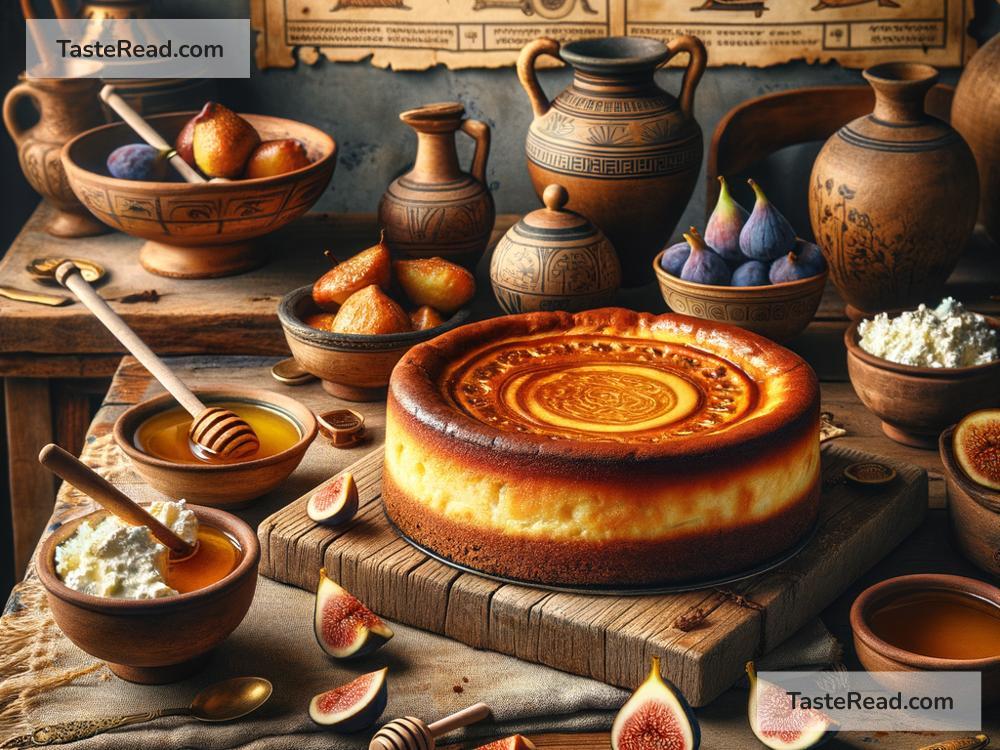Origins of the First Cheesecake in Folklore
Cheesecake is one of the world’s favorite desserts, loved for its creamy texture and rich flavor. It can come in endless varieties—classic New York style, fruity toppings, chocolate swirls, or even savory versions. But have you ever wondered where cheesecake came from? How did such a decadent treat become part of our culinary tradition? To find out, we need to dig into history and folklore surrounding this iconic dessert.
Ancient Beginnings
Cheesecake is not just a modern dessert—it has been made in one form or another for thousands of years! In fact, one of the earliest records of cheesecake dates back to ancient Greece. According to folklore, cheesecake was used as a source of energy for athletes during the first Olympic Games in 776 B.C. Imagine that—athletes nibbling on cheesecake to gain an edge in the competition!
In ancient Greece, the ingredients for cheesecake were simple. It was made using fresh cheese, honey, and wheat flour. These ingredients would be mixed together and baked into small cakes. Compared to the rich cheesecakes we enjoy today, this early version was much simpler. It wasn’t about indulgence—it was about sustenance.
Cheesecake was also used as a celebratory dish. Some historians even say that in Greek weddings, cheesecake was served to newlyweds as a symbol of happiness and abundance. This tradition shows just how cheesecake became intertwined with people’s lives, not just as food but as part of their culture.
Roman Influence
As the Roman Empire grew and spread across Europe, they adopted many Greek traditions—including recipes! Cheesecake was one of them. The Romans took the basic recipe and added their own flair. For example, they started including eggs in the mixture to give the cheesecake a firmer texture. Roman chefs were known for their creativity, so cheesecake began to evolve into something more sophisticated.
The Romans even had their own version of cheesecake called “libum.” Libum was a small cake that served as an offering to the gods during religious ceremonies. Made with ricotta, honey, and flour, the recipe was simple but good enough for the gods themselves! Cheesecake wasn’t just food—it had spiritual significance too.
When the Roman Empire expanded, they carried their cheesecake recipes through Europe. This helped spread cheesecake to new cultures and adapt it to local tastes. For example, in Northern Europe, cheesecakes started incorporating specific types of cheeses like curd and cream cheese.
Medieval Times and Beyond
After the fall of the Roman Empire, cheesecake recipes didn’t disappear. In fact, during the Middle Ages, cheesecake continued to evolve. It was often served in royal courts and noble households as a luxurious treat. Medieval cooks experimented with flavors, adding spices like cinnamon and nutmeg, which had become popular in Europe through the spice trade.
By the Renaissance, cheesecake had become a widely appreciated dessert across Europe. Various countries began creating their own versions based on local ingredients. For instance, Italians made cheesecake with mascarpone cheese, while the British used curd cheese. Everyone had their own twist, but the basic concept—cheese, sweetener, and a baked crust—remained the same.
Cheesecake Comes to America
Cheesecake eventually made its way to America, brought over by European immigrants. Early American cheesecakes were quite similar to European versions, but everything changed in 1872 when cream cheese was invented by a man named William Lawrence in New York. Cream cheese was soft, smooth, and mild in flavor—perfect for cheesecake.
This invention led to the creation of what we now know as the classic New York-style cheesecake. With its dense texture and creamy middle, New York cheesecake became a defining dessert for American cuisine. Unlike older versions, it usually skips the crumbly top layer and focuses on a buttery crust and a rich filling.
Today, cheesecakes are made worldwide in countless styles. Whether baked or no-bake, topped with fresh fruit or chocolate drizzle, this dessert continues to delight people from all cultures.
Cheesecake and Folklore
The history of cheesecake is full of legends and cultural significance. In ancient Greece, cheesecake was believed to be a gift from the gods, nourishing athletes and celebrating marriages. In Rome, it became a religious offering, symbolizing devotion and gratitude. Cheesecake’s simple ingredients—cheese, honey, and flour—were staples of life, but the way they came together made the dish feel special and sacred.
Even today, cheesecake is surrounded by a kind of magic. It’s the dessert people choose for birthdays, anniversaries, and other celebrations. Maybe that’s because cheesecake isn’t just food; it’s connected to happiness and sharing. From ancient Greece to modern America, cheesecake still carries with it the idea of joy, tradition, and indulgence.
Conclusion
Cheesecake has come a long way from its humble beginnings in ancient Greece. With influences from Romans, medieval cooks, and American innovation, it has transformed into a dessert that’s loved worldwide. Its origins rooted in folklore remind us that food is more than just sustenance—it’s culture, connection, and tradition.
So the next time you enjoy a slice of cheesecake, think about its journey through history. Whether Olympic athletes were eating it for energy or newlyweds were sharing it at their wedding feast, cheesecake has always been more than just dessert—it’s part of the human story.


